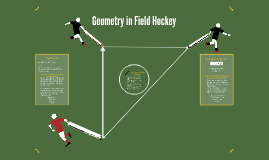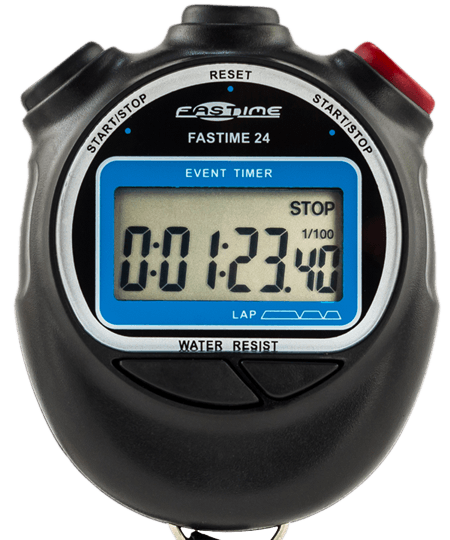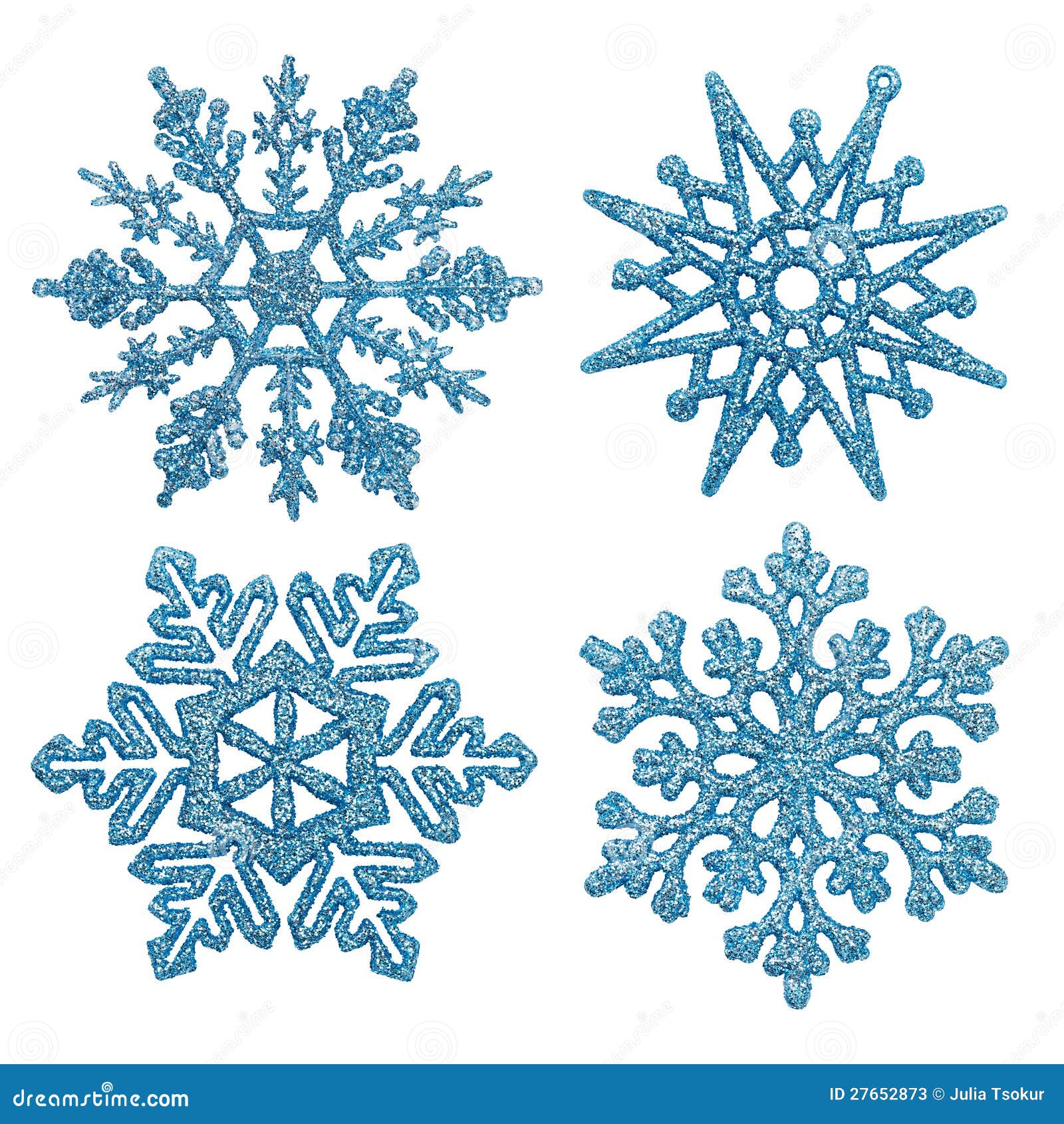 I have always known that there must be some level of mathematics behind medicine and health care, however, I did not realise just quite how important it is in the world of medicine. As the daughter of a nurse, friends of medical students and someone who considered nursing as a career, I have a basic knowledge of the aspects of maths involved in medicine.
I have always known that there must be some level of mathematics behind medicine and health care, however, I did not realise just quite how important it is in the world of medicine. As the daughter of a nurse, friends of medical students and someone who considered nursing as a career, I have a basic knowledge of the aspects of maths involved in medicine.

 A further example of using charts in medicine is for measuring a baby during pregnancy. If there is sudden growth noticed in the chart, this will be cause warning bells in the doctor’s head. They will want to get the pregnancy checked out in a scan to see if there are any complications.
A further example of using charts in medicine is for measuring a baby during pregnancy. If there is sudden growth noticed in the chart, this will be cause warning bells in the doctor’s head. They will want to get the pregnancy checked out in a scan to see if there are any complications.
 I also looked at the idea of calculating drug doses during my work placement as it is different in adults and children. For adults, initially everyone is given the same dosage, no matter their age, weight or height meaning a frail 89-year-old woman would get the same dosage as a tall, obese 30-year-old man. Whilst in paediatrics, the drug dosage is calculated per kg of weight to ensure the child is administered the correct and safe dosage. Another aspect that involves maths is intravenous drips- it is important to calculate how much fluid the patient has lost and how much they need whilst ensuring there isn’t too much fluid going in that the electrolytes end up diluted.
I also looked at the idea of calculating drug doses during my work placement as it is different in adults and children. For adults, initially everyone is given the same dosage, no matter their age, weight or height meaning a frail 89-year-old woman would get the same dosage as a tall, obese 30-year-old man. Whilst in paediatrics, the drug dosage is calculated per kg of weight to ensure the child is administered the correct and safe dosage. Another aspect that involves maths is intravenous drips- it is important to calculate how much fluid the patient has lost and how much they need whilst ensuring there isn’t too much fluid going in that the electrolytes end up diluted.
I have also been a regular patient at my local GP practice and have had a few hospital visits which has sparked an interest in this aspect of maths. By attending these appointments, I have been able to see maths in action rather than just reading or hearing about it. I’ve had my blood pressure taken, CAT and MRI scans and been prescribed medication. All of these require maths.
 Blood pressure is a ‘mathematical representation’ of two forces. The top number known as systolic is the force against the artery walls when the heart beats and the bottom number known as diastolic is the force against the artery walls between the two beats of the heart (this is when the heart is in a relaxed state). A blood pressure range of 110/70 to 120/80 is considered normal (Medindia, no date).
Blood pressure is a ‘mathematical representation’ of two forces. The top number known as systolic is the force against the artery walls when the heart beats and the bottom number known as diastolic is the force against the artery walls between the two beats of the heart (this is when the heart is in a relaxed state). A blood pressure range of 110/70 to 120/80 is considered normal (Medindia, no date).

CAT and MRI scans are both types of x-ray. Maths is required here to monitor the intensity of the x-ray and to angle the rays to scan the required part of the body. When an x-ray passes through the body, it does so in a straight line. The greater the distance, the stronger the x-ray needs to be (Budd and Mitchell, 2008).
 Maths is required in prescribing medications as it is important for doctors to prescribe only enough tablets to complete the planned time e.g. a course of antibiotics for 2 weeks. An example in my life is when I went to Canada for the whole summer, I needed enough tablets to do me for 11 weeks. This required calculating how many of each tablet I need each day multiplying that by 7 and then that by 11 to determine the exact quantities I would require to ensure I didn’t have to miss out on medications.
Maths is required in prescribing medications as it is important for doctors to prescribe only enough tablets to complete the planned time e.g. a course of antibiotics for 2 weeks. An example in my life is when I went to Canada for the whole summer, I needed enough tablets to do me for 11 weeks. This required calculating how many of each tablet I need each day multiplying that by 7 and then that by 11 to determine the exact quantities I would require to ensure I didn’t have to miss out on medications.
An interesting point was brought up in this workshop about interpreting research and probabilities in medicine. We discussed the idea of statistics and risks e.g. how much your chances increase of death by smoking, being overweight etc. Junior doctors discuss these issues with patients daily yet they often don’t know the statistics and the actual risk increase of lung cancer from smoking. This means that sometimes more senior doctors need to step in with the statistics when chatting to a patient. We discussed whether it is fair to expect junior doctors to know all the statistics when they are just starting their career and how even workers within statistics only know their own area of statistics off by heart and need to look up other statistics.
 Biomechanics was mentioned during the workshop which is all about the forces required to cause fractures. We also looked at pharmacodynamics and biochemistry. This involves the amount of a medicine administered depending on how fast it leaves the patient’s body which depends on kidney function and how much the patient urinates.
Biomechanics was mentioned during the workshop which is all about the forces required to cause fractures. We also looked at pharmacodynamics and biochemistry. This involves the amount of a medicine administered depending on how fast it leaves the patient’s body which depends on kidney function and how much the patient urinates.
 Something I was not aware of before today was the value of Twitter in medicine. Twitter has been used to discover the waves of diseases e.g. the flu. People tweet about having flu like symptoms which helps the NHS to know that in a short time, there will likely be an increase in patients coming into their local GP practice with the flu due to the spread of it. I was fascinated by this as it could be used to help predict future diseases.
Something I was not aware of before today was the value of Twitter in medicine. Twitter has been used to discover the waves of diseases e.g. the flu. People tweet about having flu like symptoms which helps the NHS to know that in a short time, there will likely be an increase in patients coming into their local GP practice with the flu due to the spread of it. I was fascinated by this as it could be used to help predict future diseases.
 Maths is not only required once you are a qualified doctor, it is required even before you enter university through the UKCAT test scores, UCAS tariffs which consider your upbringing and where you live. The idea of deprivation is considered and it has been found that those from a rich area and with parents who have jobs in professional settings such as doctors, teachers, lawyers etc are the most likely to apply to medical school. However, it was interesting to see that those from a poorer background with parents in manual jobs which don’t require a degree were more likely to apply than those from a rich background with parents in manual jobs. This may be due to schemes to encourage the more deprived who are capable to attend medical school and bring in variety to the world of doctors. By having doctors who are from poorer backgrounds, it helps to break barriers as they can relate to patients and therefore the level of trust may be higher.
Maths is not only required once you are a qualified doctor, it is required even before you enter university through the UKCAT test scores, UCAS tariffs which consider your upbringing and where you live. The idea of deprivation is considered and it has been found that those from a rich area and with parents who have jobs in professional settings such as doctors, teachers, lawyers etc are the most likely to apply to medical school. However, it was interesting to see that those from a poorer background with parents in manual jobs which don’t require a degree were more likely to apply than those from a rich background with parents in manual jobs. This may be due to schemes to encourage the more deprived who are capable to attend medical school and bring in variety to the world of doctors. By having doctors who are from poorer backgrounds, it helps to break barriers as they can relate to patients and therefore the level of trust may be higher.
During university assessment, maths is required to calculate pupils’ scores and determine if teaching is sufficient. For example, medical students sit a 360 question multiple choice test which is then analysed. It may be found that most students answer D to a question but the “correct” answer was A yet nobody chose this. The medical school would then need to consider why this was and determine if students were in fact correct. Medical students perform OSCEs which are scenario based exams where students go to different stations and must respond to the patient’s case accordingly. Medical schools must determine what is an adequate pass mark to ensure that all students who pass are practicing medicine safely.
 Statistics play a huge part in medicine and predicting future illnesses and life expectancies. Life expectancy is calculated by taking the average age of death for everyone that year e.g. if the average age of death was 76.9 in 2017, then the life expectancy for babies born in 2017 would be 76.9. It has been seen that men tend to die approximately 5 years younger than women. This may be due to men, in general, being worse at visiting the doctor and waiting longer to seek help if they have a health concern. Living in a poor area has also been shown to decrease life expectancy, particularly if you are male.
Statistics play a huge part in medicine and predicting future illnesses and life expectancies. Life expectancy is calculated by taking the average age of death for everyone that year e.g. if the average age of death was 76.9 in 2017, then the life expectancy for babies born in 2017 would be 76.9. It has been seen that men tend to die approximately 5 years younger than women. This may be due to men, in general, being worse at visiting the doctor and waiting longer to seek help if they have a health concern. Living in a poor area has also been shown to decrease life expectancy, particularly if you are male.
 Maths in Medicine could be explored in the classroom in various ways. Role play could be used where children run a doctors’ clinic and must prescribe the correct number of tablets to each patient. Medicine could be brought into maths problems where students must determine how much IV fluid is required to keep a patient healthy. Pupils could consider the different angles required to x-ray a particular part of someone’s body. Older pupils could look into health statistics and even create their own surveys for a topic such as healthy eating or exercise within the class. They could look at the average, mean, median and mode of these figures. Maths is clearly a skill required in medicine and we need to educate pupils on this as for all we know we could be educating a class full of future doctors!
Maths in Medicine could be explored in the classroom in various ways. Role play could be used where children run a doctors’ clinic and must prescribe the correct number of tablets to each patient. Medicine could be brought into maths problems where students must determine how much IV fluid is required to keep a patient healthy. Pupils could consider the different angles required to x-ray a particular part of someone’s body. Older pupils could look into health statistics and even create their own surveys for a topic such as healthy eating or exercise within the class. They could look at the average, mean, median and mode of these figures. Maths is clearly a skill required in medicine and we need to educate pupils on this as for all we know we could be educating a class full of future doctors!
Budd, C. and Mitchell, C. (2008) Saving Lives: The Mathematics of Tomography. Available at: https://plus.maths.org/content/saving-lives-mathematics-tomography (Accessed: 9 November 2017).
Medindia (no date) Blood Pressure Calculator. Available at: http://www.medindia.net/patients/calculators/blood-pressure-calculator.asp (Accessed: 9 November 2017).





 Field hockey teams usually consist of 16 players, 11 on the field and 5 reserves.
Field hockey teams usually consist of 16 players, 11 on the field and 5 reserves.
 When trapping a hockey ball, a player’s stick must be at a 120 degree obtuse angle when first moving the stick in a motion to meet the ground. This specific angle helps the player have more control over the ball when first stopping it; it also gives the players more time and skill to continue playing.
When trapping a hockey ball, a player’s stick must be at a 120 degree obtuse angle when first moving the stick in a motion to meet the ground. This specific angle helps the player have more control over the ball when first stopping it; it also gives the players more time and skill to continue playing. Pythagoras’ Theorem relates to field hockey through the triangle passing in the sense that three hockey players can successfully eliminate their opponent through correct distance measurements.
Pythagoras’ Theorem relates to field hockey through the triangle passing in the sense that three hockey players can successfully eliminate their opponent through correct distance measurements. As with most sports, time is crucial. It is needed to ensure that the game lasts for the set time. A collegiate field hockey game is divided into two halves each lasting 35 minutes in length. Half time lasts seven minutes. At half time, the teams switch playing sides. If a game is tied at the end of regulation, there will be two seven-minute periods of play.
As with most sports, time is crucial. It is needed to ensure that the game lasts for the set time. A collegiate field hockey game is divided into two halves each lasting 35 minutes in length. Half time lasts seven minutes. At half time, the teams switch playing sides. If a game is tied at the end of regulation, there will be two seven-minute periods of play. Many people scrunch up their face or roll their eyes when they think of maths, many believe that it is boring. I reckon it does not have to be that way- maths can be fun! I believe that we as teachers need to liven up the idea of maths and bring in cross curricular learning as well as looking at learning mathematics through play.
Many people scrunch up their face or roll their eyes when they think of maths, many believe that it is boring. I reckon it does not have to be that way- maths can be fun! I believe that we as teachers need to liven up the idea of maths and bring in cross curricular learning as well as looking at learning mathematics through play. Research has shown that previous traditional teaching methods have not been successful as when adults were asked to explain how to solve particular problems and why we need certain mathematical concepts, they were unable to recount their learning. These rote and drill teaching methods such as handing pupils a page of calculations to complete has been referred to as shallow learning as it did not make complete sense to pupils. Parents and teachers are now worried that the maths that parents pass onto their children is not solid and accurate yet it is crucial that parents play an active part in the mathematical learning of their children particularly during the early years (Valentine, 2017). It is important for maths to be a continuous part of the home environment through aspects such as time (for cooking), money (bills) and telling the time to help encourage the learning.
Research has shown that previous traditional teaching methods have not been successful as when adults were asked to explain how to solve particular problems and why we need certain mathematical concepts, they were unable to recount their learning. These rote and drill teaching methods such as handing pupils a page of calculations to complete has been referred to as shallow learning as it did not make complete sense to pupils. Parents and teachers are now worried that the maths that parents pass onto their children is not solid and accurate yet it is crucial that parents play an active part in the mathematical learning of their children particularly during the early years (Valentine, 2017). It is important for maths to be a continuous part of the home environment through aspects such as time (for cooking), money (bills) and telling the time to help encourage the learning.
 Play is important because it is a major part of children’s everyday world- for them it is a familiar environment, resulting in more successful learning as it is a meaningful context. Furthermore, play helps them to develop social skills such as sharing e.g. they can use maths in a role play situation e.g. play shop. Play also allows children to learn in their own time and be independent learners. They are able to control what happens during their learning and the outcomes of it. By using play to learn maths, children are able to visualise their learning instead of using a textbook e.g. use of 3D shapes. Play allows children to experiment in a relaxed environment where making mistakes is not an issue and written outcomes are not a focus.
Play is important because it is a major part of children’s everyday world- for them it is a familiar environment, resulting in more successful learning as it is a meaningful context. Furthermore, play helps them to develop social skills such as sharing e.g. they can use maths in a role play situation e.g. play shop. Play also allows children to learn in their own time and be independent learners. They are able to control what happens during their learning and the outcomes of it. By using play to learn maths, children are able to visualise their learning instead of using a textbook e.g. use of 3D shapes. Play allows children to experiment in a relaxed environment where making mistakes is not an issue and written outcomes are not a focus. There are many forms of play which can be used for learning. These include symbolic, creative, discovery, physical, technology, games, environmental and books and language. Activities may include rhymes, outdoor play, songs and role play. We looked at a video on maths in literature where mathematical concepts were used in traditional fairytales and stories such as Goldilocks and the Three Bears which changed to Goldilocks and the Three Squares. Something as simple as this is a great way to introduce children to basic concepts in maths.
There are many forms of play which can be used for learning. These include symbolic, creative, discovery, physical, technology, games, environmental and books and language. Activities may include rhymes, outdoor play, songs and role play. We looked at a video on maths in literature where mathematical concepts were used in traditional fairytales and stories such as Goldilocks and the Three Bears which changed to Goldilocks and the Three Squares. Something as simple as this is a great way to introduce children to basic concepts in maths.

 Tessellations of congruent shapes, such as above, are called monohedral tessellations. The word monohedral literally means ‘one’ – mono and ‘shape’ – hedral. Regular tessellations are made up of only one regular shape repeated, whilst semi-regular tessellations are made up of two or more regular shapes tiled to create a repeating pattern. A lot of Islamic art uses tessellations of equilateral triangles, squares and hexagons. Furthermore, in Spain there are many examples of art in tiling such Park Güell in Barcelona.
Tessellations of congruent shapes, such as above, are called monohedral tessellations. The word monohedral literally means ‘one’ – mono and ‘shape’ – hedral. Regular tessellations are made up of only one regular shape repeated, whilst semi-regular tessellations are made up of two or more regular shapes tiled to create a repeating pattern. A lot of Islamic art uses tessellations of equilateral triangles, squares and hexagons. Furthermore, in Spain there are many examples of art in tiling such Park Güell in Barcelona.



 Snowflakes are another example of maths in nature. They exhibit six-fold radial symmetry, with elaborate, identical patterns on each arm. Snowflakes are made entirely of water molecules which have solidified and crystallised to form weak hydrogen bonds with other water molecules. The bonds maximise attractive forces and reduce repulsive forces, allowing the snowflake to form its hexagonal shape
Snowflakes are another example of maths in nature. They exhibit six-fold radial symmetry, with elaborate, identical patterns on each arm. Snowflakes are made entirely of water molecules which have solidified and crystallised to form weak hydrogen bonds with other water molecules. The bonds maximise attractive forces and reduce repulsive forces, allowing the snowflake to form its hexagonal shape 
 Maths is even required in photography. Many photographers use the ‘Rule of Thirds’ to set up their photos. This is where the image in broken down into 9 sections using 4 lines. The idea is that if you capture an image where the main object/focus is placed along the lines or the intersections, the photo will be more natural and pleasing to the viewer instead at the centre of the shot (Rowse, no date). Another method photographers use is balancing elements. This is similar to the rule of thirds and is simply placing a focal point off centre to create a more interesting image, however, this means there is empty space at the opposite side. This is where balancing elements comes in- you place another similar object at the other side to balance the photo out- known as formal balance. Informal balance is when you place two varying objects at opposite sides of the image (Google, no date). Leading lines are another method used in photography in which straight objects such as roads are used to draw the viewer’s eye to the image and connect the foreground to the background (McKinnell, no date). The final method photographers use is symmetry and patterns within photos to create a balanced and aesthetically pleasing image (DMM, no date).
Maths is even required in photography. Many photographers use the ‘Rule of Thirds’ to set up their photos. This is where the image in broken down into 9 sections using 4 lines. The idea is that if you capture an image where the main object/focus is placed along the lines or the intersections, the photo will be more natural and pleasing to the viewer instead at the centre of the shot (Rowse, no date). Another method photographers use is balancing elements. This is similar to the rule of thirds and is simply placing a focal point off centre to create a more interesting image, however, this means there is empty space at the opposite side. This is where balancing elements comes in- you place another similar object at the other side to balance the photo out- known as formal balance. Informal balance is when you place two varying objects at opposite sides of the image (Google, no date). Leading lines are another method used in photography in which straight objects such as roads are used to draw the viewer’s eye to the image and connect the foreground to the background (McKinnell, no date). The final method photographers use is symmetry and patterns within photos to create a balanced and aesthetically pleasing image (DMM, no date).